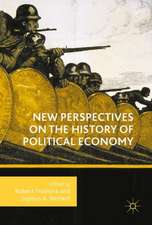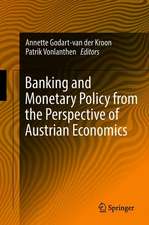Trade Relations between Qing China and Tokugawa Japan: 1685–1859: Studies in Economic History
Autor Hao Pengen Limba Engleză Paperback – 14 aug 2020
| Toate formatele și edițiile | Preț | Express |
|---|---|---|
| Paperback (1) | 722.12 lei 6-8 săpt. | |
| Springer Nature Singapore – 14 aug 2020 | 722.12 lei 6-8 săpt. | |
| Hardback (1) | 732.70 lei 3-5 săpt. | |
| Springer Nature Singapore – 21 iun 2019 | 732.70 lei 3-5 săpt. |
Din seria Studies in Economic History
-
 Preț: 480.14 lei
Preț: 480.14 lei -
 Preț: 491.86 lei
Preț: 491.86 lei -
 Preț: 495.94 lei
Preț: 495.94 lei -
 Preț: 492.45 lei
Preț: 492.45 lei -
 Preț: 491.31 lei
Preț: 491.31 lei -
 Preț: 483.20 lei
Preț: 483.20 lei -
 Preț: 488.42 lei
Preț: 488.42 lei -
 Preț: 481.68 lei
Preț: 481.68 lei -
 Preț: 485.32 lei
Preț: 485.32 lei -
 Preț: 487.61 lei
Preț: 487.61 lei -
 Preț: 501.71 lei
Preț: 501.71 lei -
 Preț: 499.58 lei
Preț: 499.58 lei - 18%
 Preț: 731.10 lei
Preț: 731.10 lei - 18%
 Preț: 998.82 lei
Preț: 998.82 lei -
 Preț: 386.99 lei
Preț: 386.99 lei -
 Preț: 398.35 lei
Preț: 398.35 lei - 18%
 Preț: 1226.24 lei
Preț: 1226.24 lei - 18%
 Preț: 738.37 lei
Preț: 738.37 lei - 18%
 Preț: 733.33 lei
Preț: 733.33 lei - 18%
 Preț: 896.84 lei
Preț: 896.84 lei - 20%
 Preț: 507.51 lei
Preț: 507.51 lei - 18%
 Preț: 783.98 lei
Preț: 783.98 lei - 15%
 Preț: 698.94 lei
Preț: 698.94 lei - 18%
 Preț: 782.87 lei
Preț: 782.87 lei - 18%
 Preț: 1000.36 lei
Preț: 1000.36 lei - 18%
 Preț: 1117.69 lei
Preț: 1117.69 lei - 15%
 Preț: 695.19 lei
Preț: 695.19 lei -
 Preț: 379.86 lei
Preț: 379.86 lei - 24%
 Preț: 1115.63 lei
Preț: 1115.63 lei - 18%
 Preț: 721.33 lei
Preț: 721.33 lei - 18%
 Preț: 727.00 lei
Preț: 727.00 lei - 18%
 Preț: 953.82 lei
Preț: 953.82 lei - 18%
 Preț: 998.19 lei
Preț: 998.19 lei - 18%
 Preț: 787.29 lei
Preț: 787.29 lei - 18%
 Preț: 1118.13 lei
Preț: 1118.13 lei
Preț: 722.12 lei
Preț vechi: 880.64 lei
-18% Nou
Puncte Express: 1083
Preț estimativ în valută:
138.20€ • 143.74$ • 114.09£
138.20€ • 143.74$ • 114.09£
Carte tipărită la comandă
Livrare economică 15-29 aprilie
Preluare comenzi: 021 569.72.76
Specificații
ISBN-13: 9789811376870
ISBN-10: 9811376875
Pagini: 176
Ilustrații: XIX, 176 p. 35 illus., 21 illus. in color.
Dimensiuni: 155 x 235 mm
Greutate: 0.29 kg
Ediția:1st ed. 2019
Editura: Springer Nature Singapore
Colecția Springer
Seria Studies in Economic History
Locul publicării:Singapore, Singapore
ISBN-10: 9811376875
Pagini: 176
Ilustrații: XIX, 176 p. 35 illus., 21 illus. in color.
Dimensiuni: 155 x 235 mm
Greutate: 0.29 kg
Ediția:1st ed. 2019
Editura: Springer Nature Singapore
Colecția Springer
Seria Studies in Economic History
Locul publicării:Singapore, Singapore
Cuprins
1 Introduction.- 2 Commercial Intermediaries in the Nagasaki Trade.- 3 The Mechanism and Functions of the Shinpai Trading Permit System.- 4 Qing China’s Response to the Shinpai Trading Permit System in the Eighteenth Century.- 5 The Underside of the Junks Trade: Maritime Smuggling and Urban Trafficking.- 6 The Copper Trade of Qing China’s Official Merchants and the Affiliated Trading Group.- 7 The Consolidation of Private Chinese Merchants into the Twelve Families Association.- 8 Internal Organization of Chinese Trading Groups in Relation to the Qing Authorities.- 9 Trade Under Pre-Arranged Conditions: A New Commercial Style in the Late Eighteenth Century.- 10 Conclusive Discussions and Comprehensive Historical Narratives.- References.- Index.
Notă biografică
Hao Peng is an associate professor in the Graduate School of Economics, Osaka City University. He was born and brought up in China. After getting his first master’s degree in the Graduate School of History, Fudan University, he went to Japan in the autumn of 2005 and continued to study the history of early modern Japan at the Graduate School of Humanities and Sociology, The University of Tokyo. There, he finished his second master’s degree in 2008, and then a doctoral degree in 2012. During the following 4 years, he continued his study at the Historiographical Institute, The University of Tokyo, first as a postdoctoral fellow of the Japan Society for the Promotion of Science and then as a program-specific researcher. He has held his current position since the spring of 2016.
His research book based on his doctoral thesis was published in 2015 by The University of Tokyo Press. The title is Kinsei Nisshin Tsūshō Kankeishi (the history of the early modern trade relationship between Qing China and Tokugawa Japan). That book earned him the Nikkei Economic Book Culture Award (by the Nikkei Inc. and Japan Center for Economic Research) in 2015. Besides the history of the Nagasaki trade, his study interests cover maritime history, the history of culture exchange, and comparative urbanization.
His research book based on his doctoral thesis was published in 2015 by The University of Tokyo Press. The title is Kinsei Nisshin Tsūshō Kankeishi (the history of the early modern trade relationship between Qing China and Tokugawa Japan). That book earned him the Nikkei Economic Book Culture Award (by the Nikkei Inc. and Japan Center for Economic Research) in 2015. Besides the history of the Nagasaki trade, his study interests cover maritime history, the history of culture exchange, and comparative urbanization.
Textul de pe ultima copertă
This book explains compellingly that, despite common belief, in the early modern period, the intra-East Asian commercial network still functioned sustainably, and within that network, the Sino-Japanese trade can be seen as the most significant part which not only connected the Chinese and Japanese domestic markets but also was linked to the global economy. It is commonly thought that East Asian countries like China and Japan maintained a stance of so-called national isolation during the period from the seventeenth century to the middle of the nineteenth century. It is true that diplomatic relations between Qing China and Tokugawa Japan could have not been established for reasons such as guarantees of security; however, every year merchants in junks voyaged to Nagasaki and carried out transactions with Japanese merchants or business agents. How this kind of trade relation was maintained stably without any diplomatic guarantees and in which way the governments of the two sides edged intothe trade and accommodated the trade conflicts and institutional frictions are essential but seldom-emphasized topics. This book aims to shed light on these issues and thereby examine the character of the unique trade order in early modern East Asia as well, by analyzing a large quantity of the seldom-used and unpublished Chinese and Japanese primary and secondary sources.
Caracteristici
Is the first academic book in English that thoroughly examines the Sino-Japanese trade relationship in the early modern period Presents unique research with the main focus on how Sino-Japanese trade was maintained sustainably and stably with no diplomatic guarantees Provides a fresh perspective by focusing on the interactions between Qing China’s and Tokugawa Japan’s foreign trade policies
























